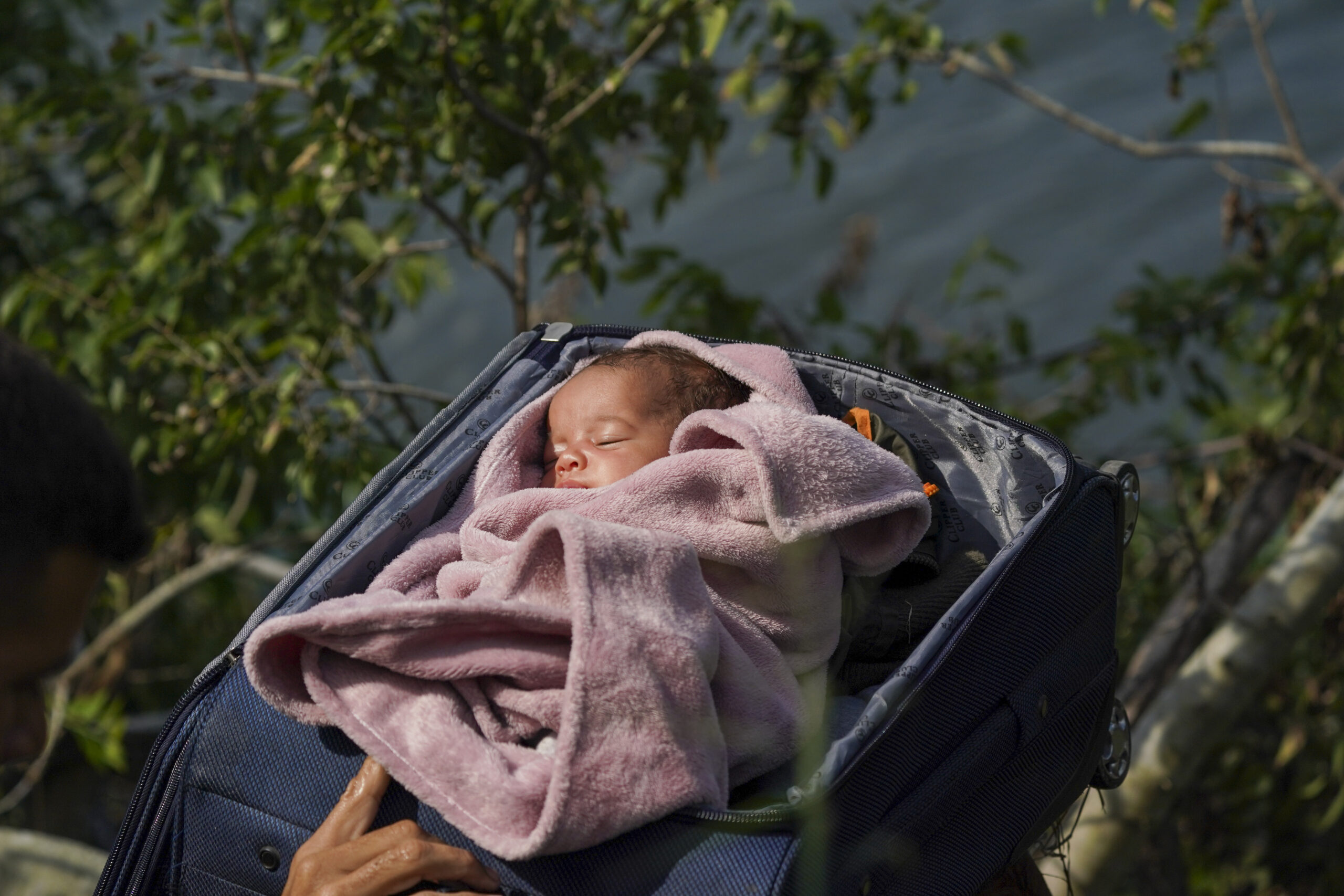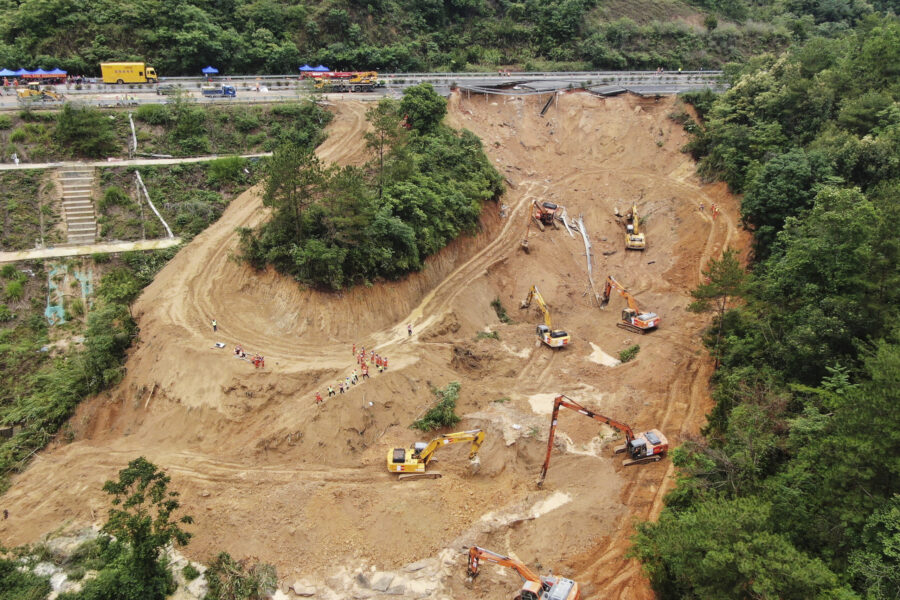MATAMOROS, Mexico (AP) — Migrants rushed across the border hours before pandemic-related asylum restrictions were to expire Thursday, fearing that new policies would make it far more difficult to gain entry into the United States.
In a move to clear out overwhelmed holding facilities, Border Patrol agents were told Wednesday to begin releasing some migrants with instructions to appear at an immigration office in the United States within 60 days, according to a U.S. official. The official was not authorized to speak publicly about the matter and provided information to The Associated Press on condition of anonymity.
The Biden administration has been unveiling measures to replace Title 42, which suspended rights to seek asylum since March 2020 on grounds of preventing the spread of COVID-19.
On Wednesday, the Homeland Security Department announced a rule to make it extremely difficult for anyone who travels through another country, like Mexico, to qualify for asylum. It also introduced curfews with GPS tracking for families released in the U.S. before initial asylum screenings.
In Matamoros, across from Brownsville, Texas, migrants arrived steadily on Wednesday, stripping down before descending a steep bank clutching plastic bags filled with clothes. They slowly waded into the river, one man holding a baby in an open suitcase on his head.
On the U.S. side, they put on dry clothing and picked their way through concertina wire. Many surrendered to authorities, hoping to be released to stay legally while pursuing their cases in backlogged immigration courts, which takes years.
William Contreras of Venezuela said Title 42 was favorable to people of his wracked South American country, having heard that many before him were released in the United States.
“What we understand is that they won’t be letting anyone else in,” said Contreras’ friend, Pablo, who declined to give his last name because he planned to cross the border illegally. “That’s the reason for our urgency to cross through the border today.”
The Border Patrol stopped about 10,000 migrants on Tuesday, one of its busiest days ever, according to a U.S. official who spoke on condition of anonymity because he was not authorized to speak publicly. That’s nearly double the daily average of about 5,200 in March, the latest publicly available data, and close to the 11,000 that U.S. officials have predicted is the upper limit of a surge they anticipate after Title 42.
More than 27,000 people were in U.S. Customs and Border Protection custody, the official said, well above capacity. In March 8,600 were in custody.
Border Patrol agents were ordered Wednesday to begin releasing migrants in any border sector that reached 125% of its holding capacity with instructions to report to an immigration office within 60 days. They were also told to start the releases if the average time in custody exceeded 60 hours or if 7,000 migrants were taken into custody across the entire border in any one day.
In Ciudad Juarez, across from El Paso, Texas, some migrant shelters had empty beds as migrants abandoned them to cross into the U.S. Enrique Valenzuela, who coordinates migrant relief efforts for Chihuahua state, said the city’s migrant shelter population was half the nearly 3,000 staying there a few weeks ago.
On Thursday, about 400 migrants huddled in strong winds whipping up the sand on the Rio Grande riverbank east of El Paso between groups of Texas National Guard soldiers constructing concertina wire barriers. A couple from Colombia approached the concertina wire asking if they could start a fire because a 10-year old was shaking in the desert cold. Most migrants huddled together under thin blankets. Major Sean Storrud of the Texas National Guard said his troops have built 17.4 miles (28 kilometers) of wire barriers in that area in an effort to reduce massive crossings and have explained to migrants the consequences of crossing illegally.
“The migrants don’t really know what’s going to happen,” Storrud said.
While Title 42 prevented many from seeking asylum, it carried no legal consequences, encouraging repeat attempts. After Thursday, migrants face being barred from entering the U.S. for five years and possible criminal prosecution.
At the same time, the administration has introduced expansive new legal pathways into the U.S. Up to 30,000 people a month from Haiti, Cuba, Nicaragua and Venezuela can enter if they apply online with a financial sponsor and enter through an airport. Processing centers are opening in Guatemala, Colombia and elsewhere. Up to 1,000 can enter daily though land crossings with Mexico if they snag an appointment on an online app.
In San Diego, more than 100 migrants, many of them Colombian families, slept under plastic tarps between two border walls, watched over by Border Patrol agents who had nowhere to take them for processing.
Albino Leon, 51, bought chicken from Tijuana vendors through slats in the wall bordering San Diego because the cookies that agents gave him, his wife and daughter left them hungry. News that Title 42 was ending prompted the family to make the journey now.
“With the changes they are making to the laws, it’s now or never,” said Leon, who flew to Mexico from Colombia and got past a first border wall to reach U.S. soil.
While U.S. officials predict more crossings after Title 42 ends at 11:59. p.m. EDT Thursday — President Joe Biden said Tuesday that the border will be “chaotic for a while” — some were unsure. Soraya Vasquez, deputy director of Al Otro Lado, an advocacy group active in Tijuana, said crossings might fall immediately but migration would persist.
Miguel Meza, head of migrant programs for Catholic Relief Services, which has 26 migrant shelters in Mexico, estimates there are about 55,000 migrants in border cities across from the United States. More arrive daily from the south, as well as migrants expelled by the U.S. back to Mexico.
Carmen Josefina Characo, a Venezuelan woman who arrived in Matamoros with her adult daughter, said she was determined to keep trying on a U.S. government mobile app to win a spot to enter the U.S. at a land crossing. Demand has far outstripped supply, exasperating many new arrivals.
“People who just arrive start hearing the stories of others who have been here longer and they start getting alarmed. ‘Oh, you’ve been here for four months. Well, I just got here and I’m going to cross,’” Characo said.
Migrants have strained some U.S. cities over the last year.
Denver began seeing well over 100 migrants a day arrive on buses last week, activating an emergency operations center. The city is scrambling for shelter space.
“The numbers are overwhelming,” said Alan Salazar, chief of staff to Mayor Michael Hancock.
Salazar estimated about 9,000 migrants have passed through Denver since late fall, when the city suddenly became a popular stop for Venezuelans and others.
Elías Guerra, 20, came to Denver last week after hearing it was a welcoming place where he could get a free bus ticket to his final destination. After four nights in a church shelter, Denver provided a $58 bus ticket to New York City. He left Wednesday night.
“Here it’s comfortable, it’s safe, there’s food, there’s shelter, there’s restrooms,” Guerra said as he waited with dozens of other migrants in a parking garage where the city processed new arrivals.
___
Associated Press writers Colleen Long and Rebecca Santana in Washington; Christopher Sherman in Mexico City; Gerardo Carrillo in Matamoros, Mexico; Maria Verza in Ciudad Juarez, Mexico; Anita Snow in Phoenix; Nick Riccardi in Denver; Morgan Lee in Santa Fe, New Mexico; Giovanna Dell’Orto in El Paso; and Elliot Spagat in Tijuana, Mexico, contributed.














